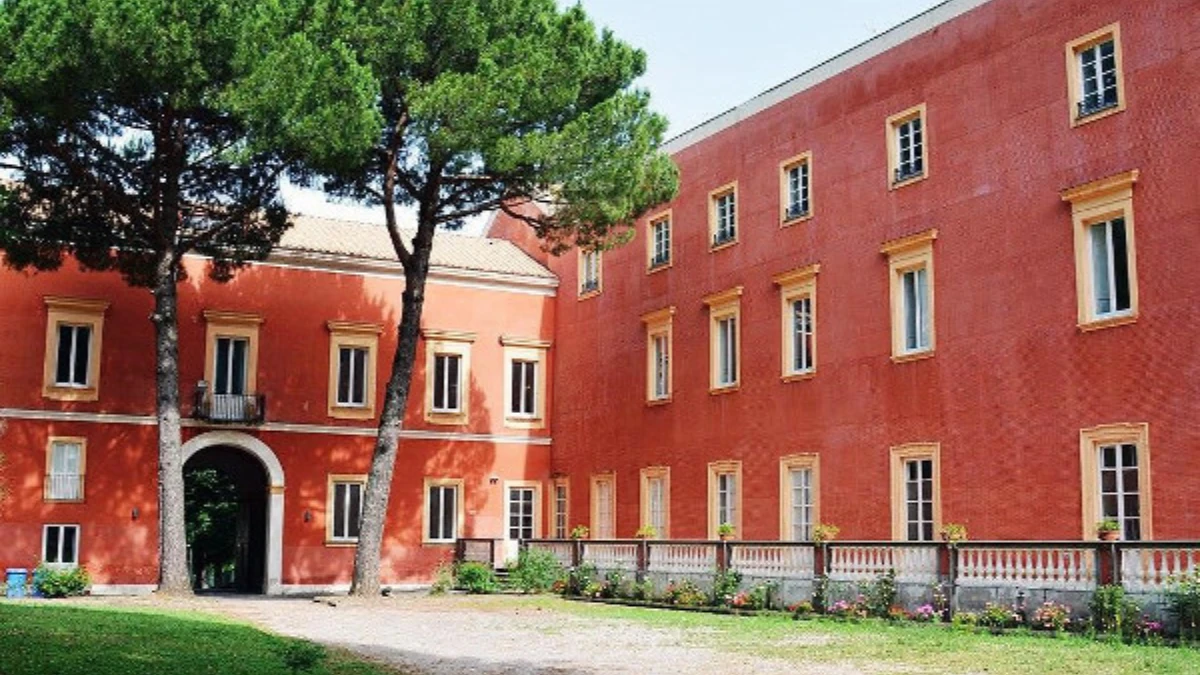The Royal Palace at Quisisana
History, attractions, and how to visit
Rome
Naples
Amalfi
Sorrento
Positano

The Royal Palace at Quisisana, or Reggia di Quisisana, is a historic gem set on the slopes of Mount Vesuvius in the town of Castellammare di Stabia.
Just a quick drive from Pompeii (10 km, 6 miles), it’s a perfect addition to any Pompeii adventure.
Built initially as a royal residence, the palace has seen numerous transformations over the centuries.
Today, after extensive restoration efforts, it houses the Libero D’Orsi Archaeological Museum of Stabia, which features a stunning collection of ancient artifacts from nearby Roman villas.
Not sure which Pompeii entry tickets are right for you? Let us guide you through the best options, from skip-the-line tickets and guided tours to convenient day tours to Pompeii, to make the most of your visit!
Historical Background
The Quisisana Palace dates back to the Angevin period in the 13th century and was widely renovated in the 18th and 19th centuries.
Originally commissioned as a retreat by Charles II of Anjou, the palace’s name reflects its purpose—”qui si sana,” meaning “heal here.”
Its prime location overlooking the Gulf of Naples made it a favored hideaway for relaxation and rejuvenation.
It became Hotel Margherita in 1898 and was converted into a hospital during both World Wars. An earthquake in 1980 left the building in further disrepair.
Over time, the palace also became a cultural hub, hosting artists, poets, and musicians who contributed to its vibrant legacy.
The Italian author Giovanni Boccaccio drew inspiration from Quisisana Palace and its grounds, using it as the setting for parts of his famous work The Decameron.
Plan your visit to Pompeii:
# Discover Pompeii’s opening hours and timings
# Find the best entrance for your Pompeii adventure
# Explore the must-see highlights of Pompeii
# Get essential tips for an unforgettable visit to Pompeii
Modern Restoration
Following decades of neglect, large-scale restoration work began in the early 2000s and culminated in 2009.
Initially conceived as a hunting lodge and summer retreat, the Reggia of Quisisana boasts an L-shaped design to provide breathtaking views of the Gulf and better access to Castellammare.
The Libero D’Orsi Archaeological Museum of Stabia, now located in the restored palace, offers visitors a glimpse into the area’s rich archaeological heritage.
Using modern educational technology and multimedia devices, the museum showcases 507 artifacts, including wall murals, marble furnishings, and ceramic and bronze items, enhancing both accessibility and understanding.
This transformation even immortalized the artworks of Hackert and Dahl and the landscapes of the School of Posillipo.
Related: Explore Pompeii with convenient day tours departing from Naples, Rome, Sorrento, Amalfi, and Positano.
Visiting the Palace today
Today, the Quisisana Palace stands proudly as a protected cultural landmark.
It offers visitors a rare glimpse into Italy’s aristocratic past.
The recent renovations introduced English landscape garden elements, such as tree-lined paths, stairways, and fountains, resulting in a picturesque and verdant environment.
This allows guests to appreciate its architecture, historic charm, and serene gardens, which are open to the public for leisurely strolls.
Recommended
Highlights of the Museum
The Royal Palace at Quisisana houses the Libero D’Orsi Archaeological Museum of Stabia.
This museum opened in 2019 as part of the Pompeii Archaeological Park network.
It is named after Libero D’Orsi, a local teacher and archaeologist who led excavations in Stabiae after World War II.
Beyond Pompeii, visitors can explore the Stabiae Archaeological Site, which is less visited than Pompeii but offers fascinating insights into Roman life.
The museum’s exhibits feature over 500 artifacts sourced from nearby Roman villas, including Villas Arianna and San Marco.
- The tale of ancient Stabiae is told through interactive and immersive gadgets, starting from its destruction during the Social Wars and ending with the explosion of Vesuvius and its rebirth
- Reunited after 250 years, the museum displays decorative components from marine villas discovered on Varano Hill and Libero D’Orsi’s discoveries
- The exhibits are set behind a dynamic projection that portrays the historic landscape as it was in AD 79
- By presenting artifacts from numerous residential and commercial buildings, the museum highlights the relationship between ancient Stabiae and the region around it
Learn about the facilities available onsite, familiarize yourself with the rules and regulations for visitors, and enjoy convenient dining and refreshment spots within Pompeii. For a complete experience, you’ll also find nearby hotels for a comfortable stay after a day of exploration.
Opening hours and how to reach
The Reggia of Quisisana is open from 9 am to 5 pm in winter, with extended hours until 7 pm in summer.
Since it is close to Villa Poppea, Villa San Marco, and Villa Arianna, visiting this palace makes a good addition to your itinerary.
You can reach Quisisana Palace by public transport, such as train and car. It is 10 km (6 miles) from the Pompeii archeological park and 32 km (20 miles) from Naples.
We recommend you go by train or by car, as there is no direct bus from Naples.
By Train
Head toward Piazza Giovanni XXIII and take Line 5 to Salita Quisisana stop after taking the Circumvesuviana Napoli-Sorrento line to the Castellammare di Stabia stop.
By Car
Proceed to the Castellammare di Stabia exit on the A3 Napoli-Salerno motorway. After 8.5 kilometers on SS145, turn left onto Viale Ippocastani after taking the second exit at Castellammare di Stabia. Proceed straight on Viale Europa, Viale delle Puglie, Via Panoramica, and turn left onto Viale Ippocastani.
Wondering how to reach Pompeii from different locations? Whether you’re coming from Rome, Naples, Amalfi, Sorrento, or Positano, we’ve gathered the best travel options to make your journey easy and hassle-free.
